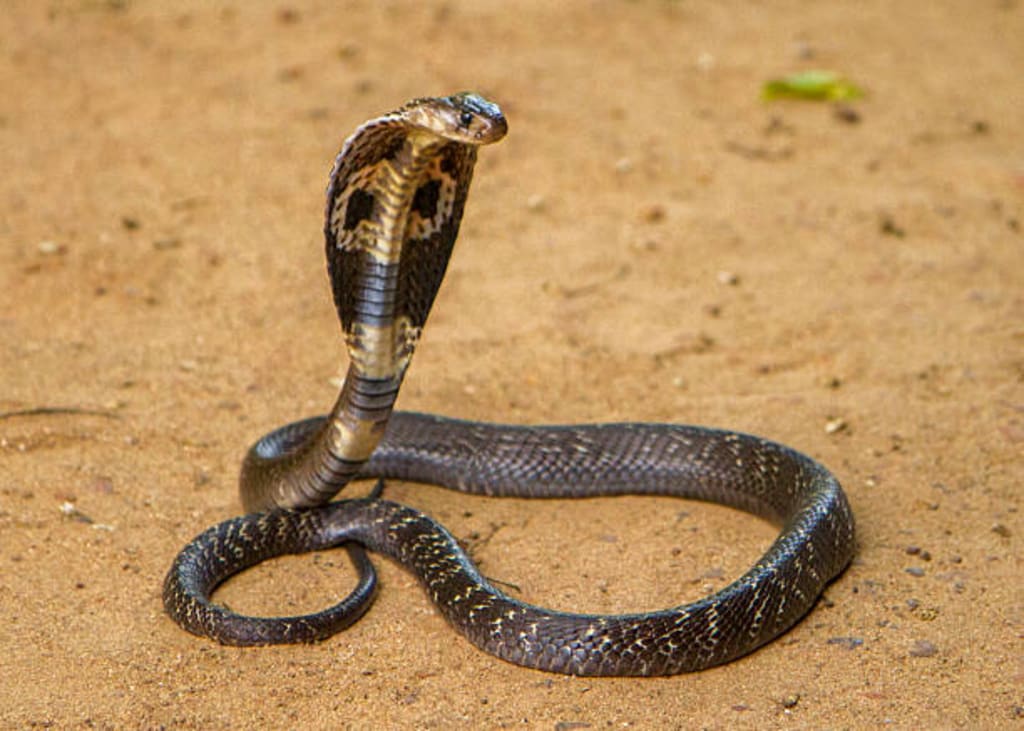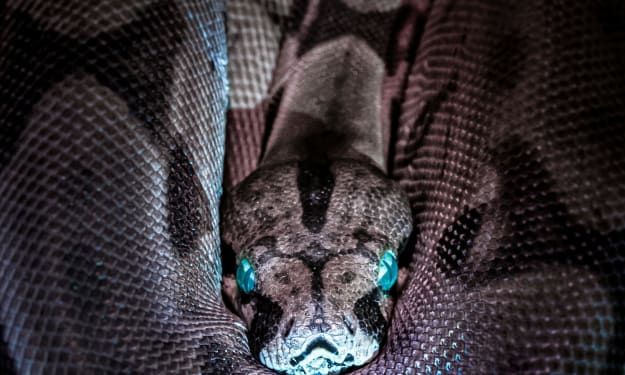After nearly 1 year in the jungle |Tiger snake 5-6kg
Tiger snake

Welcome back, viewers. Many of you have inquired about a video on identifying the king cobra and monocled cobra in Vietnamese. While we commonly refer to both as "cobra," it's important to note that only the king cobra belongs to the Naja genus, unlike the monocled cobra. In today's video, we will demonstrate how to differentiate between these two snakes using live specimens. One monocled cobra from my farm, accompanied by all necessary legal documentation, and one king cobra, which will be released into a nature reserve. Despite being contained in bags, these snakes exhibit an ability to sense their surroundings. I may consider an interview with a snakebite victim who was envenomated through a similar bag in a future video. The primary focus today is to clarify the distinctions between the two species, as there seems to be confusion among many. The king cobra featured in today's video will be reintroduced to its natural habitat tomorrow. This particular individual weighs approximately 5kg and is notably large. Let's proceed to examine the snakes. The key identifying features of the monocled cobra include its rounded hood, which can expand, and a length of around 1.4 - 1.5m. In contrast, the king cobra can reach lengths of up to 4m and displays a more substantial build indicative of peak physical condition. While the monocled cobra may spit venom, the king cobra tends to be less dramatic when domesticated. Identifying markings, such as the hood pattern, vary among individuals and species. Generally, king cobras exhibit distinct banding and arrow markings on their hoods. Size and weight also serve as distinguishing factors, with the king cobra being larger, heavier, and longer than the monocled cobra. Special attention must be paid to handling these snakes, as their venom can be lethal. Avoiding contact with the eyes is crucial due to the sensitivity of ocular tissues. The king cobra, known for its agility and predatory nature, represents a pinnacle predator in its habitat. Handling such a snake requires utmost caution and expertise, as demonstrated in this video. The importance of respecting these creatures and their habitats cannot be understated.
I have a strong interest in venomous creatures, particularly snakes. Welcome back to my latest post, where I exclusively focus on exploring nature in the wilderness. I organize field trips to observe wildlife and share my experiences with you all. It has been quite some time since my last update, about six months to be exact. Lately, I have shifted my focus from showcasing snakes in captivity in my snake room to developing a campsite for workshops and training sessions on poisonous animals and identifying toxic elements in the forest. This initiative aims to help people better understand, recognize, and minimize risks when engaging in nature-related activities. My current schedule involves spending the beginning of the week at the campsite and then returning home for rest or preparation for the following week. Midweek, from Tuesday to Thursday, I dedicate my time to caring for the snakes in my snake room before heading back to the campsite to work through the weekend. This routine forms the core of my work schedule. Today, I will be sharing updates on some snakes that have been featured before. Due to the gap in content creation, their current health status may be unknown to you. Regardless, my interactions with these snakes involve feeding them, providing water, and ensuring their well-being. The snakes in my collection are notably large and visually striking, with reflective and vibrant skin. As I proceed with my tasks, I maintain a simple and efficient approach, honed over years of working with venomous snakes. One of the standout residents in my camp is a cobra preparing to shed its skin, offering a glimpse into the impressive size these creatures can attain. This particular cobra, lacking distinct patterns on its head, stands out among its peers. My fascination with venomous animals, a niche interest in Vietnam, has led me to collaborate on projects related to these creatures, prompting the establishment of my snake room as a dedicated space for this passion. While some snakes may exhibit aggressive behavior, each requires individual attention and care. I prioritize introducing you to unique or notable specimens, such as the aforementioned cobra. Despite the challenges they may present, working with these creatures remains a rewarding endeavor. Cobras, known for their active and occasionally destructive nature, demand meticulous care and attention to detail. In contrast, green snakes exhibit a mischievous temperament, requiring constant maintenance, particularly during pregnancy. Rearing snakes, such as albino pythons, adds a colorful dimension to my work. These mutant variations showcase striking physical traits, like yellow-white scales and red eyes, offering a glimpse into the diversity within snake species. Additionally, maintaining a healthy feeding regimen for these creatures involves providing appropriate food portions, typically ranging from 10 to 15 kilograms per feeding session. Overall, my work with snakes encompasses a blend of routine care, observation, and appreciation for the unique characteristics displayed by each individual.






Comments
There are no comments for this story
Be the first to respond and start the conversation.